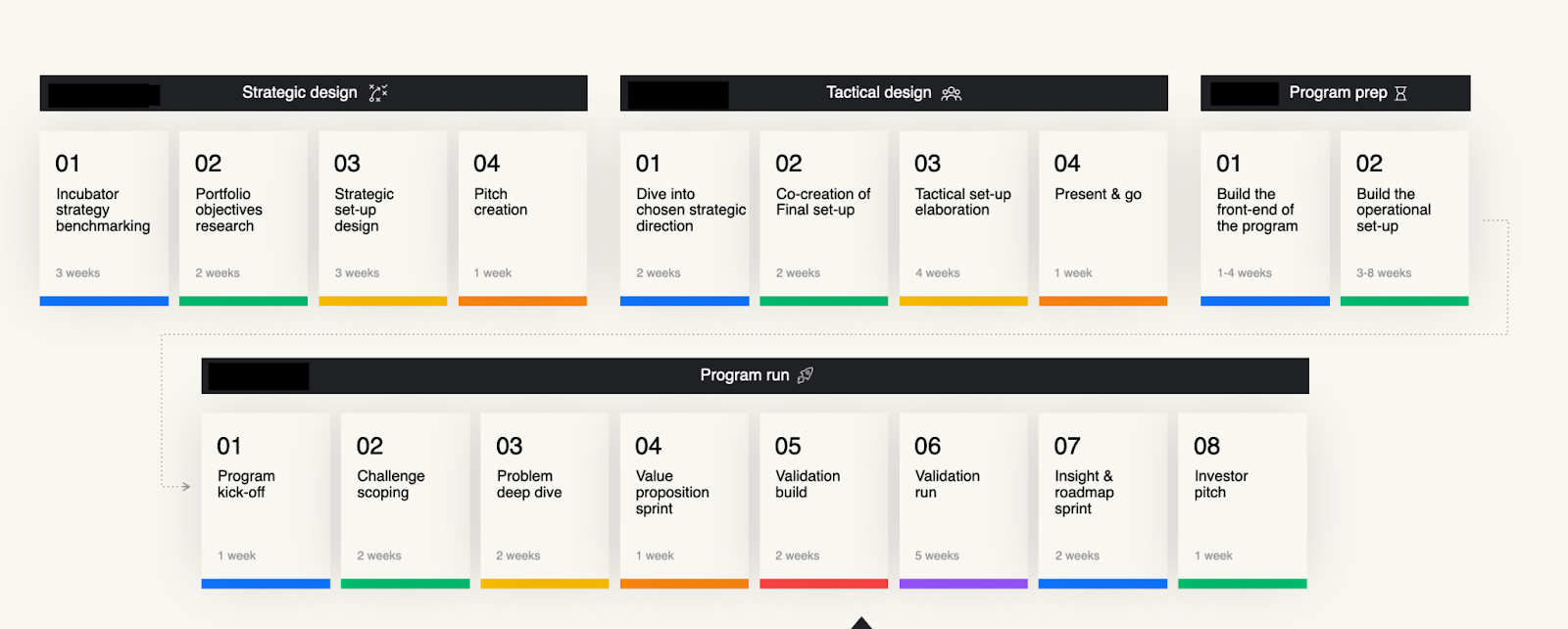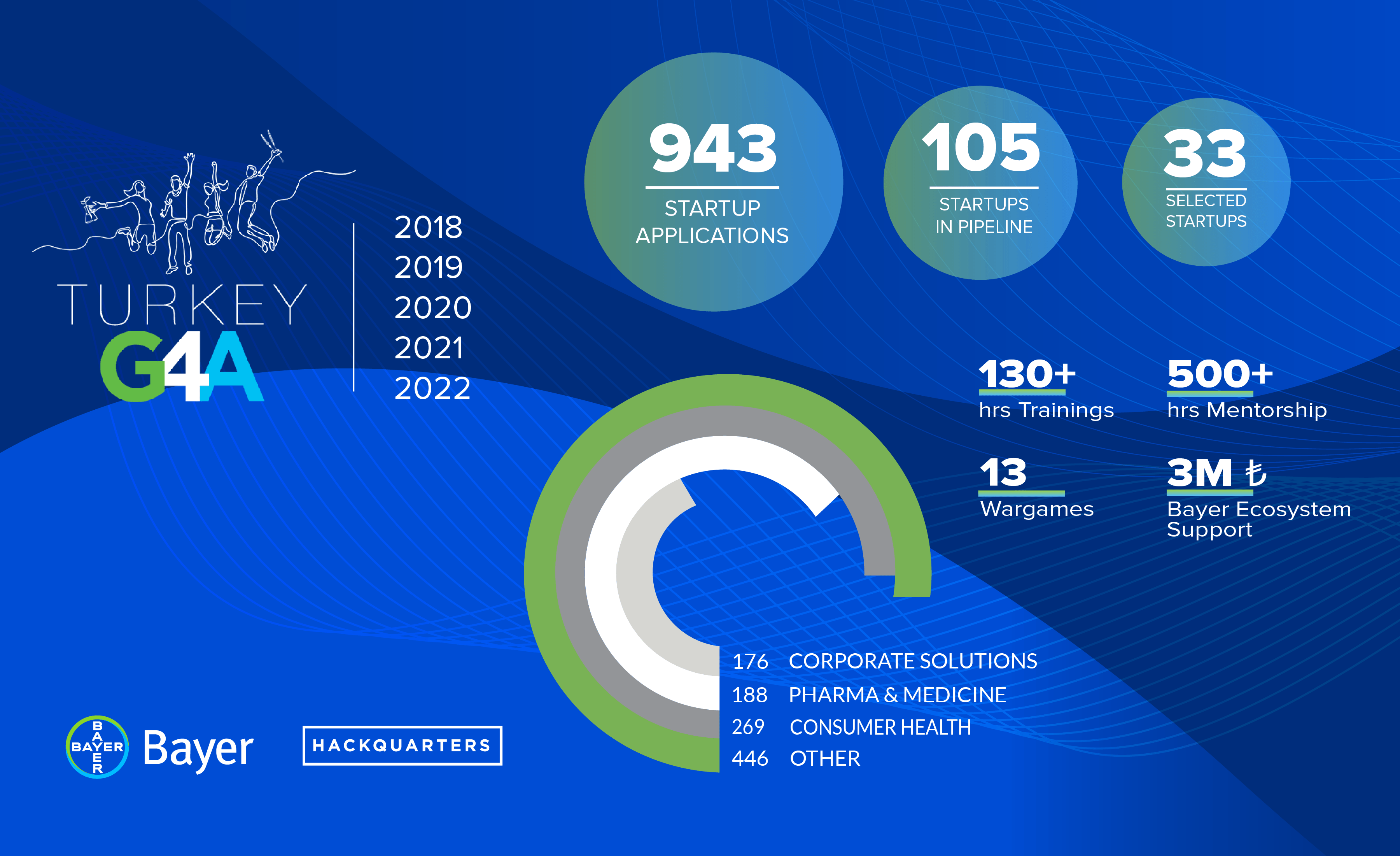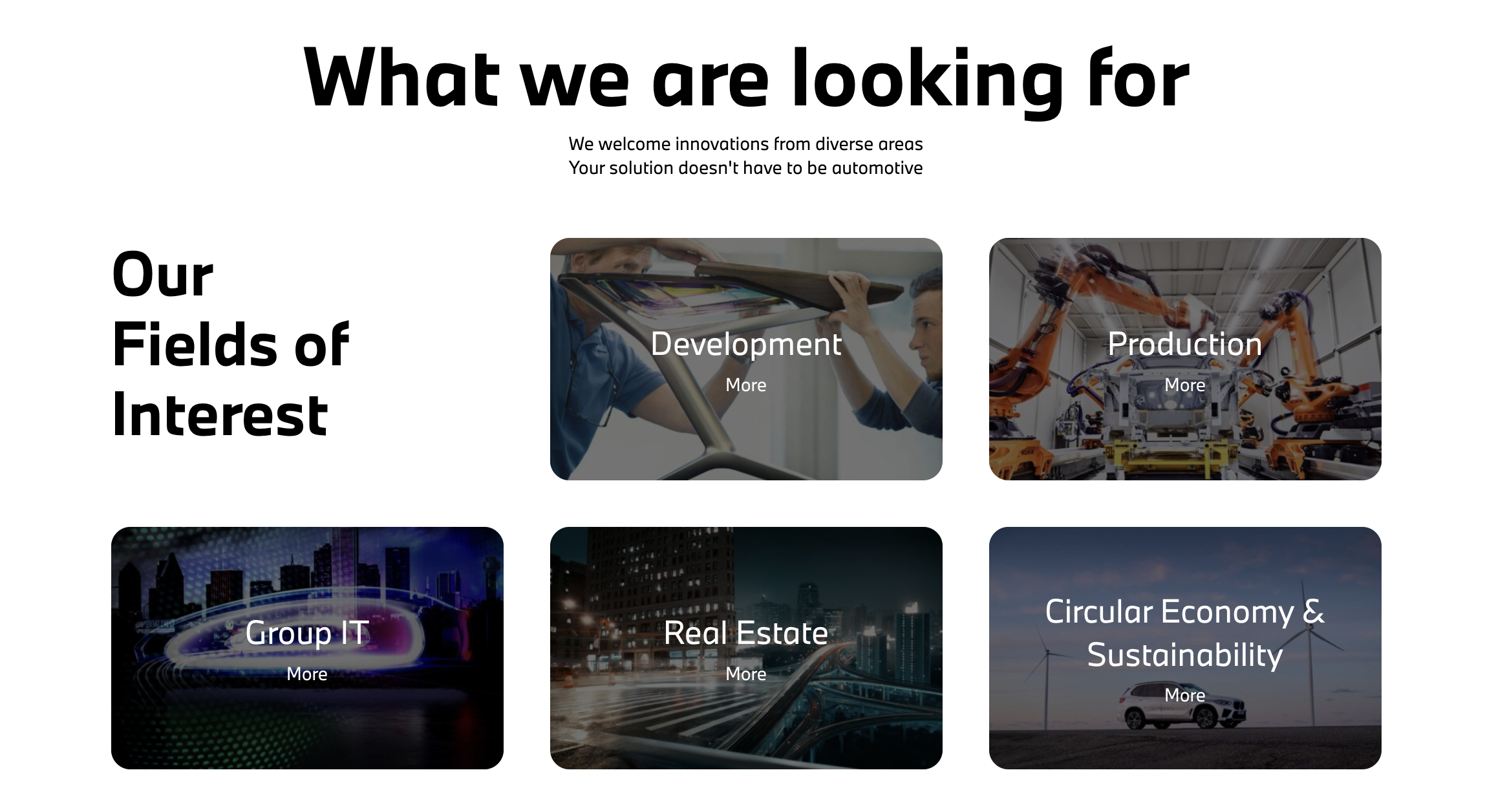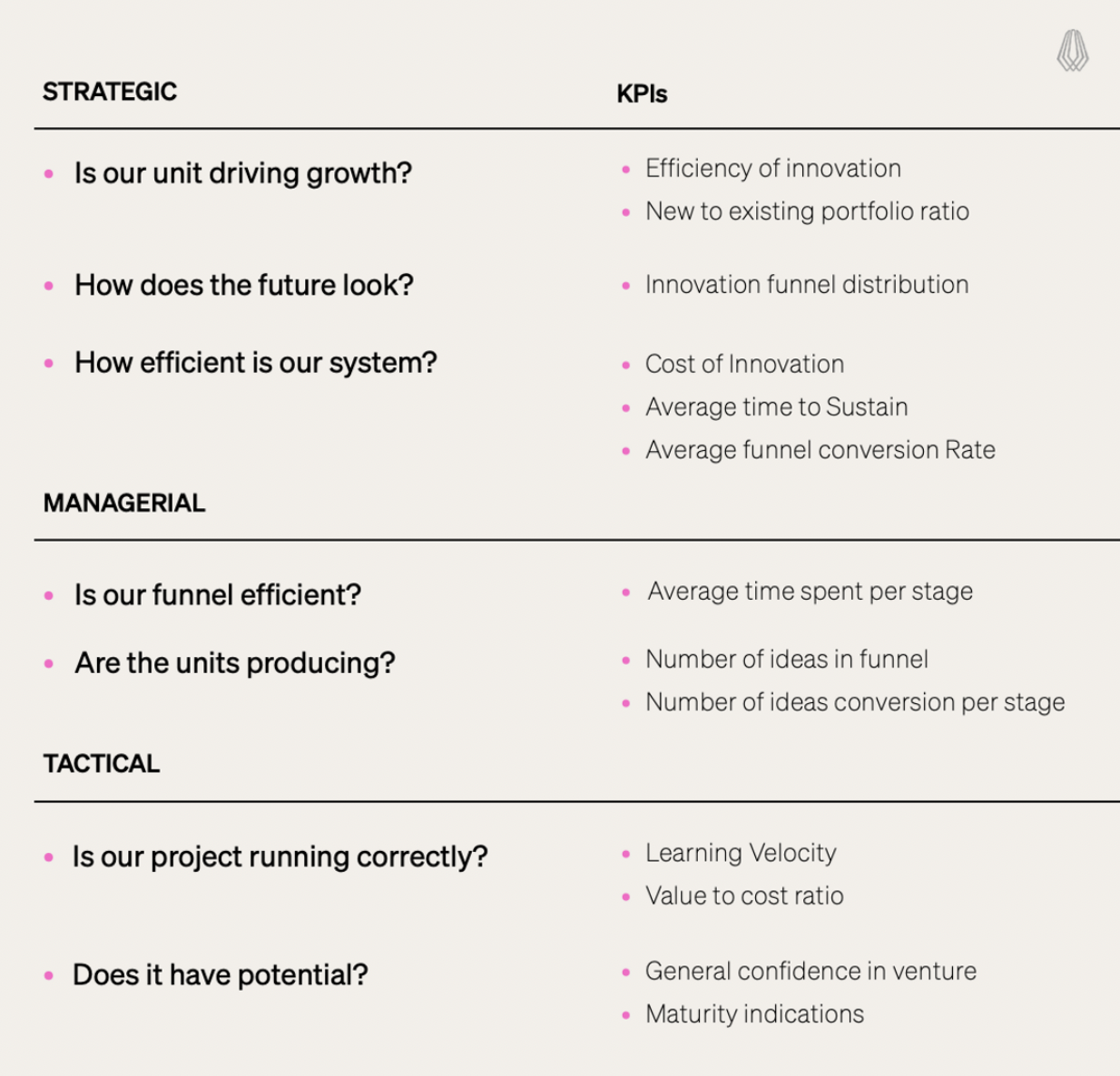Key takeaways
✔ Align your incubator strategy with corporate goals to maximise ROI by securing C-suite sponsorship and linking it to long-term strategic priorities.
✔ Choose the right innovation focus (core, adjacent, or radical) based on your risk appetite and market expansion goals.
✔ Benchmark against industry leaders by analysing 3-5 top corporate incubators and adopting proven best practices.
✔ Set up a structured innovation pipeline and funding model with clear stages (sourcing, incubation, scaling, exit) and dedicated capital.
✔ Define governance, key metrics and success milestones early by establishing decision-making authority and tracking venture success KPIs.
Corporate/startup collaboration is no longer a trend or buzz term in today’s business landscape; it’s a foundational component of most corporate innovation efforts. In fact, you’d be hard-placed to find a company in the S&P 500, Fortune 500 or Forbes 500 that isn’t somehow active in corporate venturing.
Corporate incubation, in particular, enables companies to tailor their approach to fit their unique needs, leveraging existing assets to build a scalable pipeline of profitable ventures.
While the benefits are well worth the effort, setting up a successful corporate incubator is no easy task. It requires a clear strategy, a dedicated team, and a detailed roadmap to guide the process - not to mention plenty of leadership and stakeholder support. However, when executed skillfully, incubators can help you:
- Boost revenue while turning assets into competitive advantages
- Access new markets and target audiences
- Test new tech and business models
- Diversify your portfolio past your core offering
- Expand internal capabilities and build a culture of entrepreneurship
To help you achieve those goals, we’re building on our previous 10 key steps to making your corporate incubator a success, to bring you our newly updated incubator framework for building a corporate incubator - each step, based on real Bundl projects with a track record for success.
Let’s kick things off with a bit of context.
What is a corporate incubator and, how can it drive growth?
Incubators come in all shapes and sizes, with different companies adapting the strategy to meet a variety of needs. For example, some incubators are built to accelerate digital transformations, while others focus on helping companies grow beyond their core business. They can be geared towards producing spin-offs or spin-ins, and they can specialise in working with external startups or incubating internal ideas (hybrid combinations are also possible).
There’s no “one size fits all” formula because each company is different, with its own unique combination of goals, needs, assets and requirements.
Corporate incubators generally have full ownership of their ventures, which provides them with a long-term return on investment. This is in contrast to, say, accelerators, which tend to establish partnerships or arrange some sort of equity in the venture.
How long does it take to build a corporate incubator?
While the building process changes from company to company, over the years we’ve come up with a proven approach to map out a tailored incubator strategy. Here’s what it looks like from an eagle-eye perspective:

As you can see from the above model, the entire process from incubator strategy design to program run can be set-up in roughly 8 to 10 months.
Here are a few other factors to consider before kickstarting your journey:
How long does it take to incubate a corporate venture?
Corporate incubator programs tend to be flexible and on-demand due to the rapidly changing needs of a young company that is still establishing itself. While scaling a business model is a complex and challenging endeavour, it has a relatively straightforward objective.
While each corporate incubator is unique, requiring a customised timeline, in general, the “incubation” process takes 1 to 3 years and concludes when the new company is ready to be pitched to investors or consumers.
Now that we've covered the basic, let's move on to the good stuff.
The 10 steps to building a successful corporate incubator
Step 1: Align your incubator strategy with your corporate growth goals
Why it matters: Without strategic alignment, incubators fail due to lack of executive support.
To start, envision your end goal and why your company needs an incubator e.g.:
- What corporate challenges will your incubator solve (e.g. portfolio diversification, going digital, new revenue creation, etc.)?
- How does it fit into your long-term corporate goals?
- What internal assets (tech, expertise, market access) can you leverage?
Once you have a clear understanding of your purpose, you can work on defining the scope of your incubator e.g.:
- What types of startups will your incubator focus on (e.g. internal, external)?
- Will your incubator be industry-specific or broad-range?
- What is the geographic scope of your incubator's operations?
- Will your incubator be a physical space, or will it be digital?
- How will your incubator engage with the broader innovation ecosystem (e.g. universities, local startups)?
A clear purpose and scope will put you on the right path to attract the right talent, resources, and partners.
Example: Bayer's G4A
Bayer launched Bayer's G4A (formerly Grants4Apps) to incubate health-tech startups that align with its global healthcare strategy.
The program focuses on building long-term partnerships with startups and entrepreneurs working on innovative digital health solutions. This mission aligns with Bayer's corporate strategy of improving people’s lives through science.

Step 2: Choose your innovation focus: Core, adjacent, or radical
Why it matters: The innovation focus determines the risk, funding model, and corporate buy-in required.
Consider which innovation focus works best to further your growth goals:
Core Innovation
This type of innovation involves optimising existing products for existing customers. It’s the least risky of the three and is focused on improving your current products or services to better serve your customers.
Adjacent Innovation
This type of innovation involves entering a new market by leveraging your company’s existing expertise. This type of innovation is less risky than radical innovation and enables you to capitalise on your existing strengths to expand your business.
Radical Innovation
This type of innovation is aimed at disrupting the market by developing new products or services that don’t exist yet. It’s the most ambitious type of innovation and requires significant resources, but it also has the potential to create entirely new markets and generate substantial revenue.
Remember, defining the type of innovation you want to achieve, will enable you to develop a clear strategy and set achievable goals for your incubator. So take the time to carefully consider your options and choose the type of innovation that is best suited to your needs, assets and targets.
Example: Intel Ignite
Intel Ignite incubates deep-tech startups that help further Intel's semiconductor R&D. By focusing on innovations that strengthen its core business, Intel maintains industry leadership while nurturing promising startups.

Step 3: Benchmark your incubator strategy against competitors
Why it matters: Benchmarking helps position your incubator competitively and avoid costly mistakes.
To successfully benchmark your incubator strategy, it's essential to first understand the ecosystem you’ll be playing in. This involves answering some of the following questions:
- What are the best practices of competitors in your industry and adjacent ones (e.g. hero cases)?
- What is your company's innovation ecosystem comprised of (e.g. other units)? How do your assets and resources flow between each entity?
- What governance models would best fit?
- Will you be building spin-ins or spin-outs?
Answering these questions will give you a deeper understanding of your ecosystem, enabling you to find the best value space within it and leverage it effectively.
Example: BMW Startup Garage

BMW’s Startup Garage serves as a bridge between the automotive giant and early-stage startups, helping the company stay at the forefront of mobility innovation. As part of its benchmarking strategy, the incubator closely studies emerging automotive and deep-tech trends, collaborating with startups that align with BMW’s future vision. It also evaluates best practices from other corporate incubators, ensuring its approach remains competitive.
Step 4: Choose your incubation model and venture structure
Why it matters: This will impact how your ventures are funded, developed, and scaled.
This step involves balancing strategic control against entrepreneurial freedom. You'll need to determine your approach across two key dimensions:
- Incubation model
The incubation model defines where and how ventures are developed within the corporate incubator. It determines who generates the ideas and how ventures are supported:
- Internal incubation: New ventures are developed using internal teams, corporate R&D, and existing assets (e.g., LVMH's DARE).
- External incubation: The incubator partners with startups, universities, or industry experts to co-develop new ventures (e.g., Verizon's Innovation Labs).
- Hybrid model: A mix of internal and external incubation, where corporations incubate internal ideas but also invest in or partner with startups (e.g., BASF's Chemovator).
- Venture Structure
The venture structure defines whether incubated startups stay within the corporate ecosystem or become independent entities.
- Spin-in: Ventures remain fully owned by the corporation, leveraging internal resources and distribution channels (e.g., Amazon's Lab126).
- Spin-out: Ventures become independent startups, often raising external investment but maintaining strategic ties to the corporation (e.g., Google X Moonshots).
Choose your incubation model and structure based on your corporate goals, risk tolerance, and desired level of ownership over new ventures.
Step 5: Design your innovation pipeline and funnel
Why it matters: A structured pipeline filters the best ideas into scalable ventures.
This step involves developing a structured process for sourcing, choosing, incubating, and implementing new ideas. The pipeline should be designed to facilitate a smooth flow of ideas from the ideation stage to implementation, while the funnel should be used to validate ideas and select the most promising ones.
The layers in your pipeline and funnel will vary depending on your particular needs, but in general, they’ll look something like this:


Example: TenneT’s PowerLab
TenneT’s PowerLab follows a structured innovation funnel to accelerate internal projects and foster intrapreneurship. Employees submit ideas, which undergo a three-day bootcamp for validation.

Selected projects move through a ramp-up phase, coaching sessions, and Lean Startup workshops over several months. The process culminates in a Decision Day, where teams pitch their projects for potential sponsorship and implementation. By structuring innovation this way, PowerLab ensures that the most viable ideas receive the right resources to scale within TenneT.
Step 6: Set your innovation metrics, KPI's and milestones
Why it matters: Tracking metrics ensures that the incubator delivers business impact.
To track the progress of the incubator, it's essential to define a set of innovation metrics and incubation milestones. It’s also crucial to keep in mind that you’ll be managing innovation efforts, not financial returns. With that goal in mind, here are a few of the questions and KPIs you should consider:

These should be designed to measure the progress you make toward your targets, as well as the impact of its activities on the company's overall performance. For a more detailed overview, check out our NICE metrics framework.
Example: Novartis Biome
Novartis Biome is a digital health innovation lab focused on solutions to improve patient outcomes. It works with set innovation metrics and milestones designed to ensure that startups are making progress towards their goals. Novartis Biome also provides startups with resources to help them achieve their milestones, including access to a global network of experts, data, and technologies.
Step 7: Stakeholder mapping and governance structure
Why it matters: A clear governance model ensures accountability & strategic alignment.
This step involves mapping the key stakeholders involved in your incubator and developing a governance structure to ensure effective decision-making and accountability. This includes identifying the roles and responsibilities of different stakeholders (e.g. the management team, the innovation team, and the incubator's external partners).
Example: Airbus BizLab

Airbus BizLab follows a structured governance model to ensure strategic alignment and accountability across its incubation programs. The governance structure includes three key stakeholder groups:
- Management Team: Oversees the incubator’s direction, secures funding, and ensures alignment with Airbus’ corporate strategy.
- Innovation Team: Runs daily operations, supports startups, and provides technical expertise from within Airbus.
- External Partners: Includes venture capitalists, industry experts, and research institutions that provide mentorship and funding opportunities.
By clearly defining these roles, BizLab ensures that incubated ventures receive the right mix of corporate support and entrepreneurial flexibility, driving innovation within the aerospace industry.
Step 8: Build an actionable roadmap
Why it matters: A roadmap ensures strategic execution & reduces risk.
This step involves creating a detailed roadmap with a set timeline for the incubation process and a pilot stage to test the strategy before scaling it.
Your roadmap should be actionable, with clearly outlined goals, objectives, and milestones, ensuring that everyone involved in the incubation process is working towards a common goal. It should also include specific action items and deadlines that are realistic and achievable.
The exercise is beneficial in many ways, making it easier for you to anticipate challenges and roadblocks and communicate your strategy to stakeholders and investors.
Example: NVIDIA Inception

NVIDIA’s Inception program follows a structured roadmap to support AI and deep-tech startups from early-stage development to market scaling. The process begins with an application phase, where startups submit their AI-driven innovations for review. Selected companies enter the development stage, gaining access to NVIDIA’s cloud computing resources, technical training, and mentorship.
Startups then progress to the proof-of-concept phase, where they test and validate their AI models with real-world applications. Those demonstrating strong potential move to the scaling phase, where NVIDIA provides go-to-market support, partnership opportunities, and exposure to venture capital investors.
Step 9: Define the resources and talent commitment you need
Why it matters: The right team, funding, and culture drive long-term success.
Defining the resources and talent commitment required helps ensure that your incubator has the necessary support and expertise to achieve its strategic goals and objectives.
Attracting and retaining the right talent is key, and it can be achieved by providing the right incentive (e.g. equity) and creating a supportive environment that encourages risk-taking and experimentation. Lastly, you’ll need to ensure that your team has adequate resources and access to the funding, mentoring, and growth opportunities they need to move your incubator forward.
Example: Google Ventures (GV)
Google Ventures (GV) helps founders with innovative ideas to grow and succeed. It offers its team equity as well as bonuses for achieving specific milestones. GV has been successful in attracting and retaining top talent by creating a culture that fosters innovation and entrepreneurship. The approach has contributed to the success of ventures like Uber, Nest, and Slack.
Step 10: Pitch your incubator framework to secure internal buy-in
Why it matters: C-suite support ensures long-term sustainability.
The final step is to pitch your incubator framework to secure internal buy-in from all stakeholders. This involves creating a compelling narrative for the incubator and communicating its value proposition to key decision-makers within the company.
By securing buy-in from all stakeholders, you can ensure that the incubator has the necessary resources and support to succeed. This includes not only financial resources but also access to talent, expertise and the autonomy needed to operate successfully.
Example: Citi Ventures Studio

Citi Ventures Studio secured internal buy-in by positioning itself as a driver of digital transformation within Citi. The team framed its value proposition around enhancing customer experiences, driving fintech innovation, and creating new revenue streams that align with Citi’s strategic goals.
By delivering early success stories—such as launching digital products that improved banking efficiency—Citi Ventures Studio demonstrated tangible business impact. Regular C-suite engagement, internal demo days, and data-backed progress reports helped sustain executive sponsorship, ensuring long-term support and funding.
Final Thoughts
Building a successful corporate incubator requires a clear strategy, a dedicated team, and a robust framework to guide the process. By following the steps outlined in this article, you can create an environment that fosters innovation and entrepreneurship and ultimately drives business growth.
Remember, corporate incubation is not a one-size-fits-all approach, and the incubator framework presented here can be tailored to meet the specific needs and goals of your company. By taking the time to define your purpose, understand the ecosystem, and develop a structured process, you can create a powerful incubator that drives innovation and propels your company forward in 2025 and beyond.
—--
Building a customised incubator framework enables you to leverage existing assets and take advantage of growth opportunities fast, all while expanding internal capabilities and fostering a culture of entrepreneurship. Get started today.
60 Corporate Incubators Shaping Our Future
Discover how top corporations use incubators to drive innovation and unlock new revenue streams.








